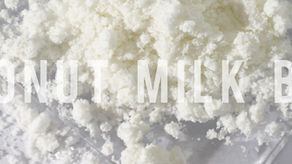top of page
Formulating for Beginners
New to formulating? Start here


Formulating for Beginners - Micellar Water & Bi Phase Micellar Water (Blog)
**Video Coming Soon** A History In 1910 the micellar water technology was born due to the hard tap water in Paris, France. It wasn’t until 1995 Bioderma created the first commercially available Micellar water. Now today, we have all kinds of different Micellar waters on the market. Originally these were designed to be, no rinse. But, if you haven’t noticed, in the beauty industry brands love to take a product and create hybrids of it. So there are basically a lot of what I


How to use Soap NutsBody Wash, Shampoo, Laundry Detergent & Hand Soap
Native to India, Nepal and other South & Southeast Asian countries these shells come from the soapberry trees. They are actually berries,...


Natural Coloring Hacks - No Artificial Dyes
Disclaimer; All colorants used in cosmetics must be FDA approved, including natural and synthetic. The methods I present to you are...


How to Make Body Powder / Dusting Powder (8/25 Exclusive)
Making your own body powder is probably the easier DIY EVER! Making the Base Realistically all you need is either Corn Starch or...


How to Choose a Preservative for DIY Cosmetics
Download my Preservatives Cheat Sheet to help you decide which preservative to use.


Preservatives Guide for Beginners
Best for watery solutions Not Natural or Ecocert Liquid Germall Plus (INCI; Propylene Glycol, Diazolidinyl Urea, Iodopropynyl...


Introduction to Making Bath Powders
Disclaimer; I recommend wearing a Respirator and Safety Goggles when working with powders Did you take Oatmeal Baths as a kid? My...


High vs Low HLB Emulsifiers - Water in Oil Emulsions vs Oil in Water Emulsions (5/25 Exclusive)
Disclaimer; **Before we get to into this post. I do want to mention something VERY important. Not every emulsifier has an HLB. There are...


Everything to Know About Vitamin C & 7 FREE Vitamin C Serum Formulas + Ecocert / Natural Recipes
Vitamin C is a well known and a clinically studied ingredient that I would argue is the most sought after ingredient in the beauty...


Why you NEED a Chelating Agent (3/25 Exclusive)
I’ve talked about Chelating Agents many times in the past, and I have a post from 2019 talking about Sodium Phytate, but apparently 2019...


How to Make Serums; Formulating for Beginners
You can formulate a simple face serum by combining Distilled water with your preservative. Then in another container combining 5%...


How to use Guar Hydroxypropyltrimonium Chloride (GuarCat) Exclusive Sept. 2024
Guar Hydroxypropyltrimonium Chloride aka (GuarCat) is a yellow powder that can dissolve into water to thicken/gel your aqueous (water...


How to use Salt to Thicken Body Washes, Face Washes, Shampoos & more (Exclusive)
Did you know you can thicken your liquid foaming surfactant based products with just ordinary table salt? Examples of foaming surfactant...


Everything to know about Niacinamide
Topics Discussed; Benefits of Niacinamide Making a Niacinamide Toner for First Time Formulators How to Write a Formula Why pH is...


Introduction to Conditioners Exclusive 7/24
Hair Conditioners are a type of Emulsion. This means you need to blend oil and water together using an emulsifier. But what separates a...


Introduction to Shampoos for Beginners - Exclusive
What Ingredients are needed to Make a Liquid Shampoo There are 3 main ingredients that you can’t skip, when making a shampoo. These 3...


How I test a New to Me Ingredient (Kojic Acid Dipalmitate-KAD) - 4/24 Exclusive
I’m going to take you through my process of how I like to formulate with a, new to me, ingredient. Things to keep in mind while working...


How to Test Stability of Emulsions - Formulating For Beginners
Knowing how to create a stable emulsion is crucial if you want to sell cosmetics. If you don’t know what an emulsion is, then you can...
bottom of page



